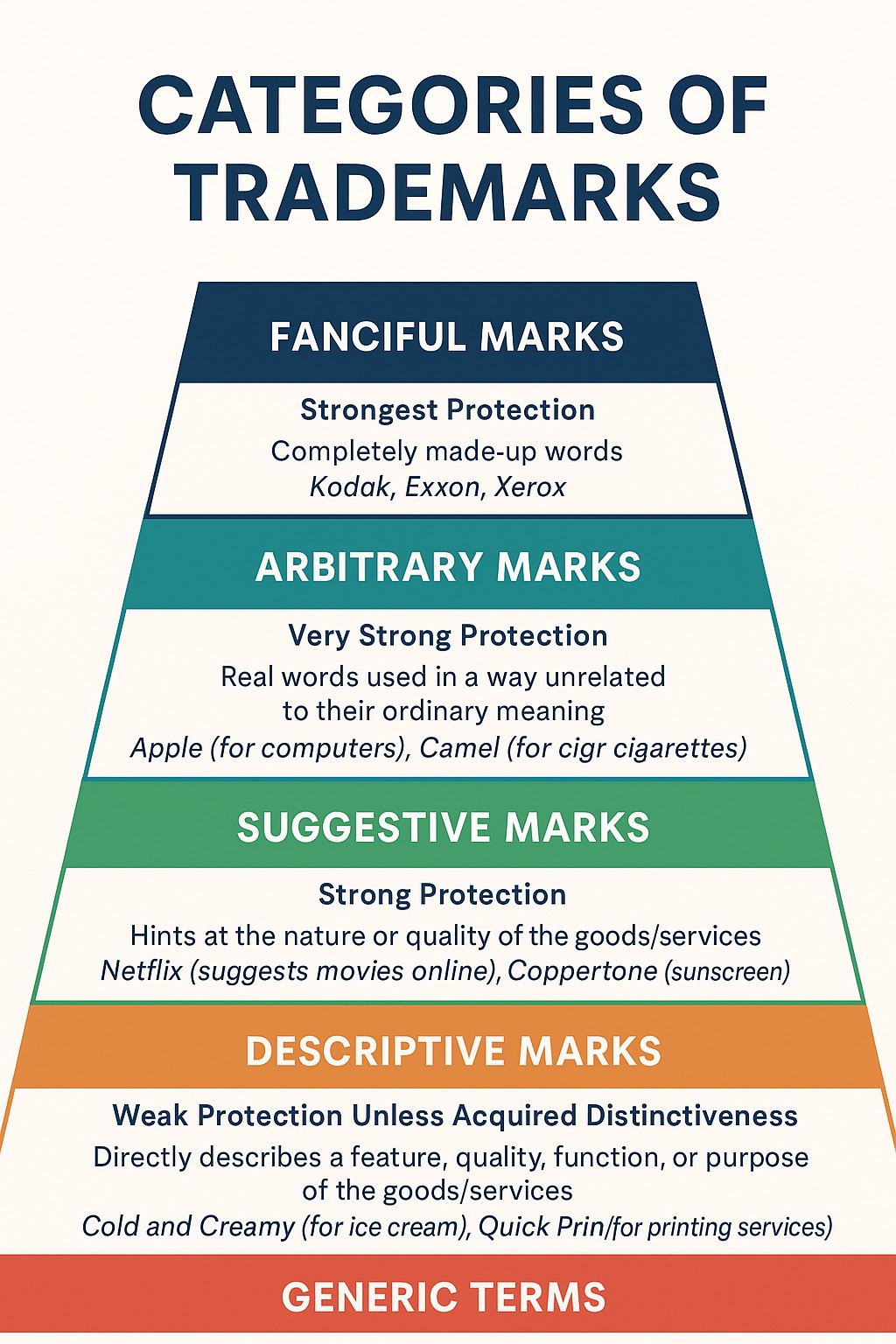When building a brand, your trademark is more than just a logo or name—it’s the legal backbone of your brand identity. But not all trademarks are created equal. In fact, trademark law recognizes different categories, each with its own level of legal protection.
If you’re starting a business or rebranding, understanding these categories can help you choose a strong trademark and protect your rights more effectively.
1. Fanciful Marks (Strongest Protection)
Definition: Completely made-up words that have no meaning other than as a brand.
Examples: Kodak, Exxon, Xerox.
Why it’s strong:
- No prior meaning, so it’s highly distinctive.
- Easy to protect because it’s unique and unrelated to the product itself.
Best for: Companies wanting maximum legal protection and a unique brand identity.
2. Arbitrary Marks (Very Strong Protection)
Definition: Real words used in a way unrelated to their ordinary meaning.
Examples: Apple (for computers), Camel (for cigarettes).
Why it’s strong:
- Ordinary word, but no descriptive connection to the goods or services.
- Still highly distinctive and protectable.
Best for: Brands that want a familiar word but still stand out in their market.
3. Suggestive Marks (Strong Protection)
Definition: Hints at the nature or quality of the goods/services, but requires imagination to make the connection.
Examples: Netflix (suggests movies online), Coppertone (sunscreen).
Why it’s strong:
- Suggestive without directly describing the product.
- Good balance between creativity and recognizability.
Best for: Companies that want a name that feels relevant without being too obvious.
4. Descriptive Marks (Weak Protection Unless Acquired Distinctiveness)
Definition: Directly describes a feature, quality, function, or purpose of the goods/services.
Examples: Cold and Creamy for ice cream, Quick Print for printing services.
Why it’s weak:
- Generic descriptive terms can’t be protected unless they’ve developed “secondary meaning” (customers associate the term with your brand, not just the product type).
Best for: Businesses willing to invest heavily in marketing to build recognition.
5. Generic Terms (No Protection)
Definition: The common name for the product or service itself.
Examples: “Computer” for computers, “Bicycle” for bicycles.
Why it can’t be protected:
- Everyone needs to use the term to identify the product category.
- Even once-strong marks can become generic through improper use (Aspirin, Escalator).
Final Thoughts
When choosing a trademark, aim for the top of the distinctiveness ladder—fanciful, arbitrary, or suggestive marks. They’re easier to register, defend, and enforce. Descriptive and generic terms, while sometimes appealing for marketing, can be legally risky and harder to protect.
As an IP lawyer, I help businesses navigate these categories to select trademarks that are not only memorable but also legally secure. Choosing wisely now can save you from costly disputes in the future.

